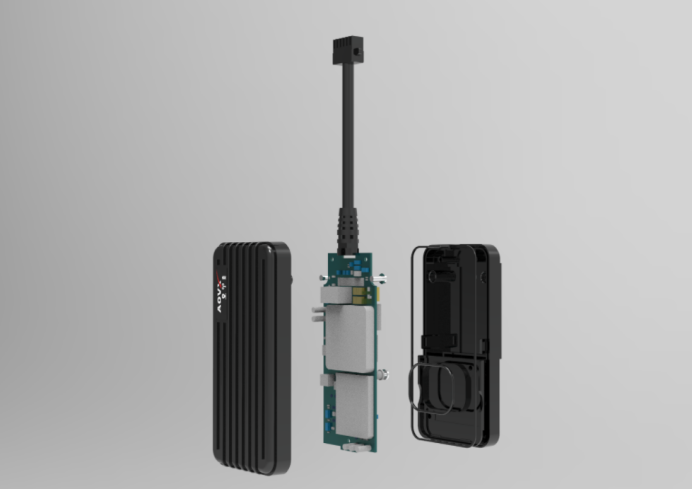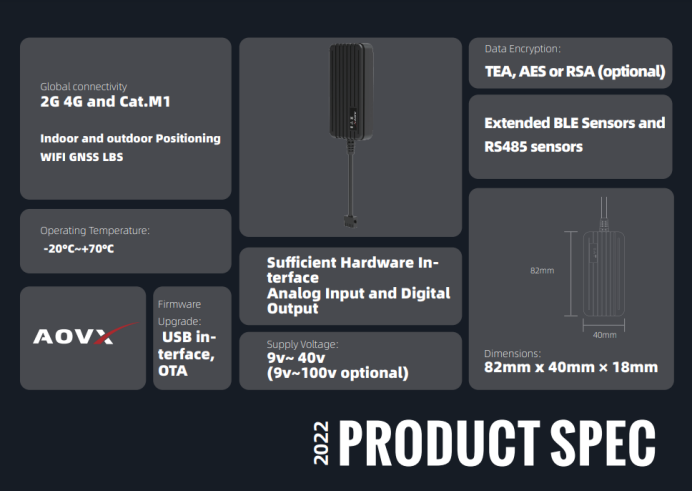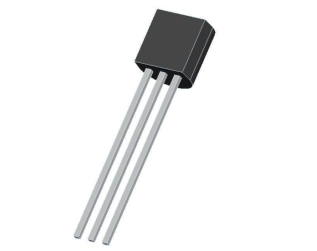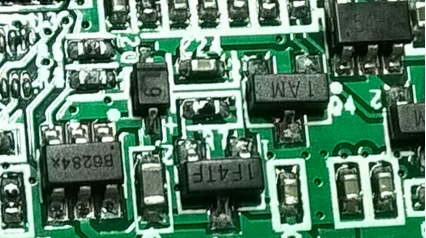News
As a logistics visualized supply chain management solution provider focusing on the field of wireless communication., AOVX tracker solutions is an experienced company for R&D for more than 10 years.

Aovx with 4 series devices, and accepted customized devices to meet the different application scenarios.

For example, the Vehicle tracker VM300
has integrated base station positioning, GPS, Beidou WiFi, and other positioning technologies, which are mainly used in vehicle remote management, including track query and ACC ignition monitoring. remote oil and power cut-off function.

MAIN ADVANTAGE
Global cat.m1/NB-IoT network
ACC ignition detection
Remote control oil and electricity cut-off
Extended GPIO
Support Bluetooth communication with external Bluetooth sensors

For more details please click: https://www.aovx.com/Products_v_series/140.html
In the vehicle tracker VM300, Our hardware components include Our hardware components include triodes, and the function is to focus on the circuit form of switching control of signals.
In this workshop, let's learn more about triodes together.
Transistor Current Formation and E-M Equation
For the triode device in the design, the first understanding of many hardware engineers is amplification. In actual work, the use of the vast majority of triodes is basically focused on the circuit form of switching control signals.

That is, the switching state of the triode is controlled by inputting the high and low levels of the base, so as to control the devices connected in series on the collector to perform switching work, or a digital drive.
The triode is the top priority in the foundation of hardware engineers, and it is necessary to re-examine our understanding of the triode. So for now, let's focus on it and start talking about it.
Let's first look at the characteristics of the port current of the two triodes in Figure 15-1 (a) and (b). The triode can be simply described in the form of two diodes, representing the emitter junction and the collector junction respectively. For convenience, we take NPN tube as an example in the following discussion.

We discuss the formation of base current Ib, collector current Ic and emitter Ie according to Figure (a). Ib is formed by the movement of majority carriers caused by the forward voltage applied to the diode between BE, mainly by holes in the base (majority carriers of P-type semiconductors) and free electrons in the emitter (N-type semiconductors) of majority carriers) movement.

We take the common-emitter amplifier circuit as an example for analysis. Due to the relatively low impurity concentration of the base (P-type) in the NPN tube process, the number of holes in the base (the majority carriers of the P-type semiconductor) is relatively small, and the free electrons in the emitter (N-type) are eliminated. The forward voltage applied by the base is absorbed into the base, and very few free electrons recombine with the holes of the base, thus forming a small base current Ib. And the vast majority are attracted to the collector by the reverse voltage applied by the diode between BC, and the movement of these free electrons forms the collector current Ic.

In the manufacture of the triode, the current gain β is formed by the doping ratio of the base region and the emitter region in the process. For this β, we can simply understand it as the ratio of the number of free electrons in the emitter that most of them move to the collector and the number of free electrons that move to the base and recombine with holes.
It is evident that the sum of these majority and minority free electrons moving out of the emitter forms the emitter current Ie.
Let's summarize the main points:
① Electrons on the emitter are attracted to the base by the voltage applied between BE.
② Most of the electrons attracted to the base by the voltage between BE are attracted to the collector by the voltage of the collector. The number of electrons entering the collector (forming Ic) and the number of electrons remaining in the base (forming Ib) are combined The ratio is β.
③ The emitter current Ie is formed by the sum of the number of electrons flowing out of the emitter, which means Ie=Ic+Ib.
Therefore, we should be familiar with the following important triode current relationships:
①The relationship between collector current and base current:

②The relationship between the emitter current and the base current:

③Relationship between collector current and BE voltage:

In 
 ,
,
Cullen ,Boltzmann constant ,
At room temperature of 20°C, 
L(s) is the emitter junction reverse saturation current. We call this relation the Ebers-Moll equation.
For the E-M equation, we need to understand that in the triode amplifier circuit, the collector current is determined by the base-emitter voltage V(be), not the base current.So also remember:
The quantitative relationship produced using the E-M equation is as follows:
1-Room temperature, V(be) For every 60mV increase, the collector current will increase by a factor of 10.
2-When the forward base current L(b) is constant, the temperature increases, and V(be) decreases with the temperature increasing at a rate of about 2.1mV/°C.
3-At room temperature, the intrinsic resistance of the emitter, 
L(c) is in mA. The intrinsic resistance of the emitter is about 25Ω, assuming a collector current of 1mA.
4-Early effect: Since the change of Vce will change the width of the base area, the larger the Vce, the narrower the base area. Then, if Vbe is constant, the collector current L(c) will increase with the increase of V(ce).
If in order to keep the collector current Lc constant, when Vce increases, Vbe needs to decrease a little to keep Lc constant. that is related to 
Therefore, this Early effect is a negative effect, which will affect the current amplification factor, voltage gain and other factors of the triode circuit.
In addition, in the application of triodes, we should also be familiar with the following two misunderstandings:
① As shown in Figure 15-1(c), what I want to point out is that the triode itself cannot amplify the signal. It only generates a proportional relationship between input and output according to its own doping process properties. The energy of the amplified output comes from the power supply.
② Regarding the current gain β, it is not a fixed value in actual use, because it is related to the ratio of the number of free electrons. Vbe voltage, Vce voltage and temperature can all affect this ratio. Therefore, if the amplification factor of a triode amplifier circuit depends on a specific value of beta, it is a stupid circuit.
Learn more about AOVX :
The wireless sensor monitoring technology developed by the AOVX creatively integrates the three elements of “people”, “goods” and “warehouses” in the logistics supply chain into one platform, and conducts all-around data collection and analysis for personnel, goods, and the environment in warehousing and logistics monitor.
Website: www.aovx.com

Latest Posts
Categories
Tags









